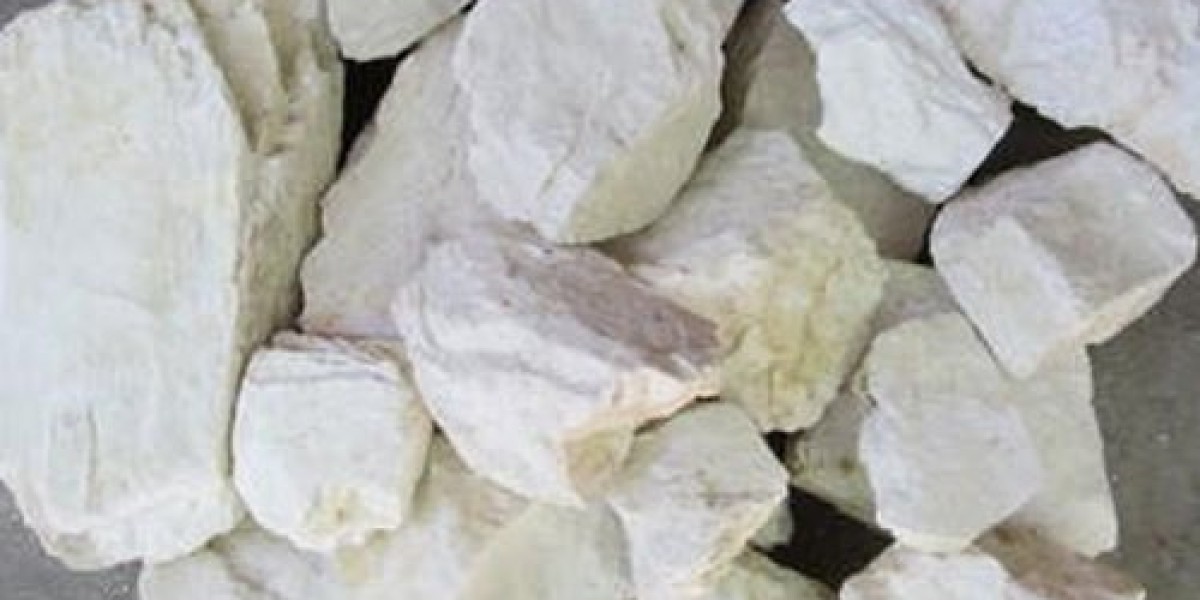Soda Feldspar, also known as Albite (NaAlSi₃O₈), is a vital mineral found in many geological environments. As one of the most common types of feldspar, Soda Feldspar plays a significant role in various industries, especially in ceramics and glass manufacturing, where it is used to lower the melting point of raw materials. Understanding the minerals often found in association with Soda Feldspar is crucial for geologists and industries involved in mineral extraction and processing. This analysis will explore eight common minerals found alongside Soda Feldspar in nature, providing a better understanding of the geological settings and practical significance of these associations.
1. Quartz (SiO₂)
Quartz is one of the most prevalent minerals on Earth, and it is commonly found in association with Soda Feldspar. Both minerals are part of the silica-rich igneous rocks like granite and rhyolite. Quartz and Soda Feldspar often crystallise together from molten magma in igneous environments, but they can also coexist in metamorphic and sedimentary rocks.
Geological Setting:
- Quartz and Soda Feldspar are primary constituents in granitic rocks, where they form as the magma cools slowly beneath the Earth’s surface.
Industrial Relevance:
- Quartz is valuable in the manufacturing of glass, electronics, and construction materials. Its presence alongside Soda Feldspar makes it easier to mine both minerals for commercial purposes.
2. Muscovite (KAl₂(AlSi₃O₁₀)(OH)₂)
Muscovite is a type of mica, commonly found in igneous and metamorphic rocks. Its shiny, flaky appearance is characteristic of mica minerals, and it frequently occurs with Soda Feldspar in pegmatites and granitic formations.
Geological Setting:
- Muscovite crystallizes during the late stages of cooling in igneous rocks like granite, often alongside Soda Feldspar and quartz. In metamorphic environments, Muscovite is part of schist and gneiss, forming under high pressure and temperature conditions.
Industrial Relevance:
- Muscovite is used in insulation, electrical applications, and even in cosmetics due to its reflective properties. Its occurrence with Soda Feldspar helps in the mining of both minerals from complex rock systems.
3. Biotite (K(Mg,Fe)₃(AlSi₃O₁₀)(OH)₂)
Biotite, another member of the mica family, is rich in iron and magnesium and is commonly found with Soda Feldspar in igneous rocks. Its dark color and flaky texture contrast with the light-colored Soda Feldspar.
Geological Setting:
- Biotite is often a part of granites, pegmatites, and gneisses. It forms during the cooling of magma, often along with feldspars, quartz, and muscovite. In metamorphic rocks, it appears in schists and gneisses as well.
Industrial Relevance:
- Although not as economically valuable as Muscovite, Biotite is used as an additive in drilling muds and sometimes in insulation materials. Its presence helps geologists identify the conditions under which a rock formed.
4. Hornblende (Ca₂(Mg,Fe,Al)₅(Al,Si)₈O₂₂(OH)₂)
Hornblende is an important member of the amphibole group and frequently coexists with Soda Feldspar in igneous rocks, especially in diorites and andesites. Its dark, elongated crystals make it easy to distinguish from other minerals.
Geological Setting:
- Hornblende forms in intermediate and mafic igneous rocks, where it crystallizes along with feldspars and quartz from magma with moderate silica content.
Industrial Relevance:
- While not commercially mined as a major resource, Hornblende is significant in geology for understanding the cooling history of igneous rocks. It also has uses in construction as part of aggregate mixes.
5. Olivine ((Mg,Fe)₂SiO₄)
Olivine, a high-temperature mineral, is often found in mafic and ultramafic rocks, particularly in association with feldspars like Soda Feldspar in less silica-rich environments.
Geological Setting:
- Olivine forms early during the crystallization of magma, especially in rocks like basalt and gabbro. It is often found with feldspar in these settings, although it typically occurs in different ratios depending on the silica content of the rock.
Industrial Relevance:
- Olivine is valuable in the manufacture of refractory bricks, casting sands, and as an abrasive. Its presence alongside Soda Feldspar helps in understanding the differentiation of magma in the Earth's crust.
6. Garnet (X₃Y₂(SiO₄)₃)
Garnet is a group of silicate minerals that frequently appear in metamorphic rocks, especially in schists and gneisses, where it coexists with Soda Feldspar and other silicate minerals.
Geological Setting:
- Garnets form under high pressure and temperature in metamorphic environments. In these rocks, Soda Feldspar often forms during recrystallization processes, making the two minerals common companions in metamorphic terrains.
Industrial Relevance:
- Garnet is widely used as an abrasive and in waterjet cutting. Its occurrence with Soda Feldspar in metamorphic rocks can indicate high-grade metamorphic conditions.
7. Tourmaline (Na(Li,Al)₃Al₆(BO₃)₃Si₆O₁₈(OH)₄)
Tourmaline is a boron-silicate mineral found in igneous and metamorphic environments, often alongside Soda Feldspar in pegmatites. Its wide color range and distinct prismatic crystals make it a recognizable mineral.
Geological Setting:
- Tourmaline is a common accessory mineral in pegmatites, where it grows with feldspars, quartz, and micas. It can also occur in schists formed under high-pressure metamorphic conditions.
Industrial Relevance:
- Tourmaline is used as a gemstone and for its piezoelectric properties. The presence of Tourmaline in pegmatites with Soda Feldspar is an important indicator for geologists when searching for gemstone deposits.
8. Zircon (ZrSiO₄)
Zircon is a zirconium silicate mineral commonly found in association with Soda Feldspar in granites and pegmatites. Its small, resistant crystals are often present in various rock types due to their durability.
Geological Setting:
- Zircon crystallizes in silica-rich environments like granite and rhyolite, often alongside feldspars and quartz. Due to its high melting point and resistance to weathering, it persists in sedimentary deposits after being eroded from igneous rocks.
Industrial Relevance:
- Zircon is valuable in the ceramics industry, particularly for glazes and refractories. It is also used in radiometric dating, making it a key mineral for understanding the age of geological formations.
Conclusion
The minerals commonly found with Soda Feldspar provide insight into the geological processes that shape the Earth’s crust. From silica-rich igneous rocks like granite to high-pressure metamorphic environments, these minerals form under diverse conditions, reflecting the complex nature of mineral formation. For industries that rely on Soda Feldspar, such as ceramics and glass production, understanding its mineral associations is essential for efficient extraction and processing. Whether it’s quartz, mica, or zircon, each mineral plays a unique role in the geological environment and contributes to the overall value of mineral deposits. If you are looking for high-quality raw materials, consider reaching out to a reliable Soda Feldspar manufacturer to explore options for your industrial needs.



